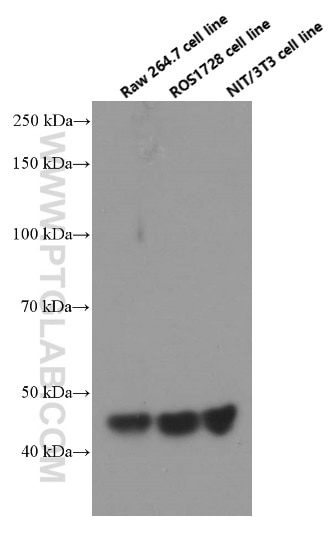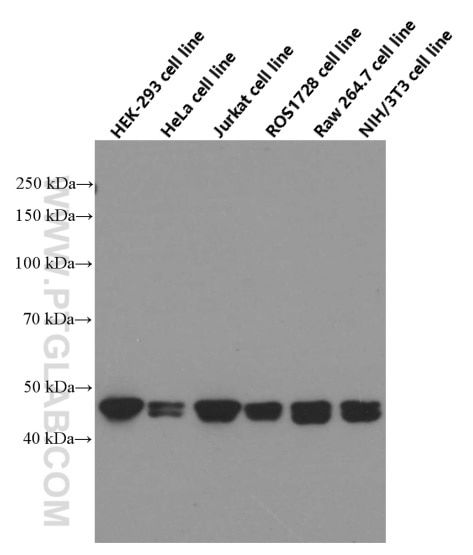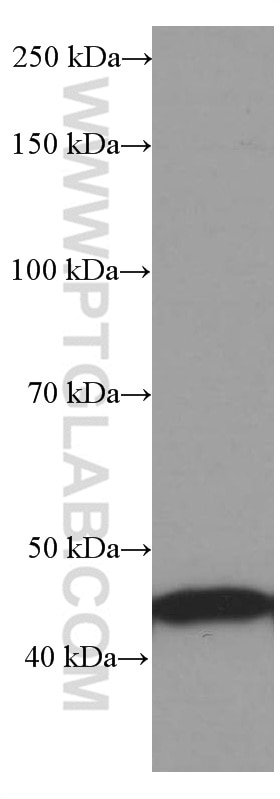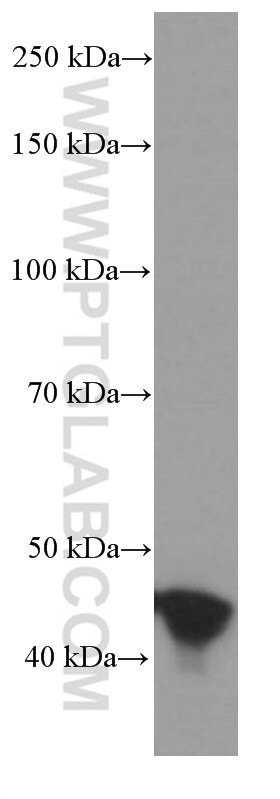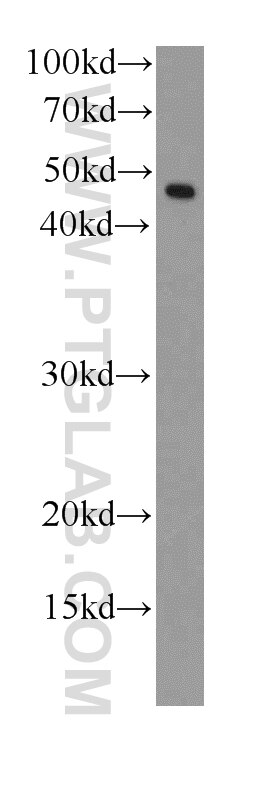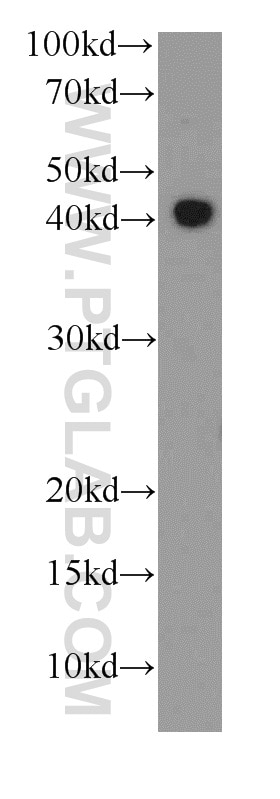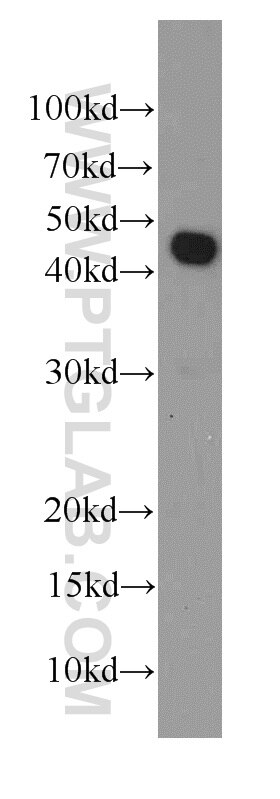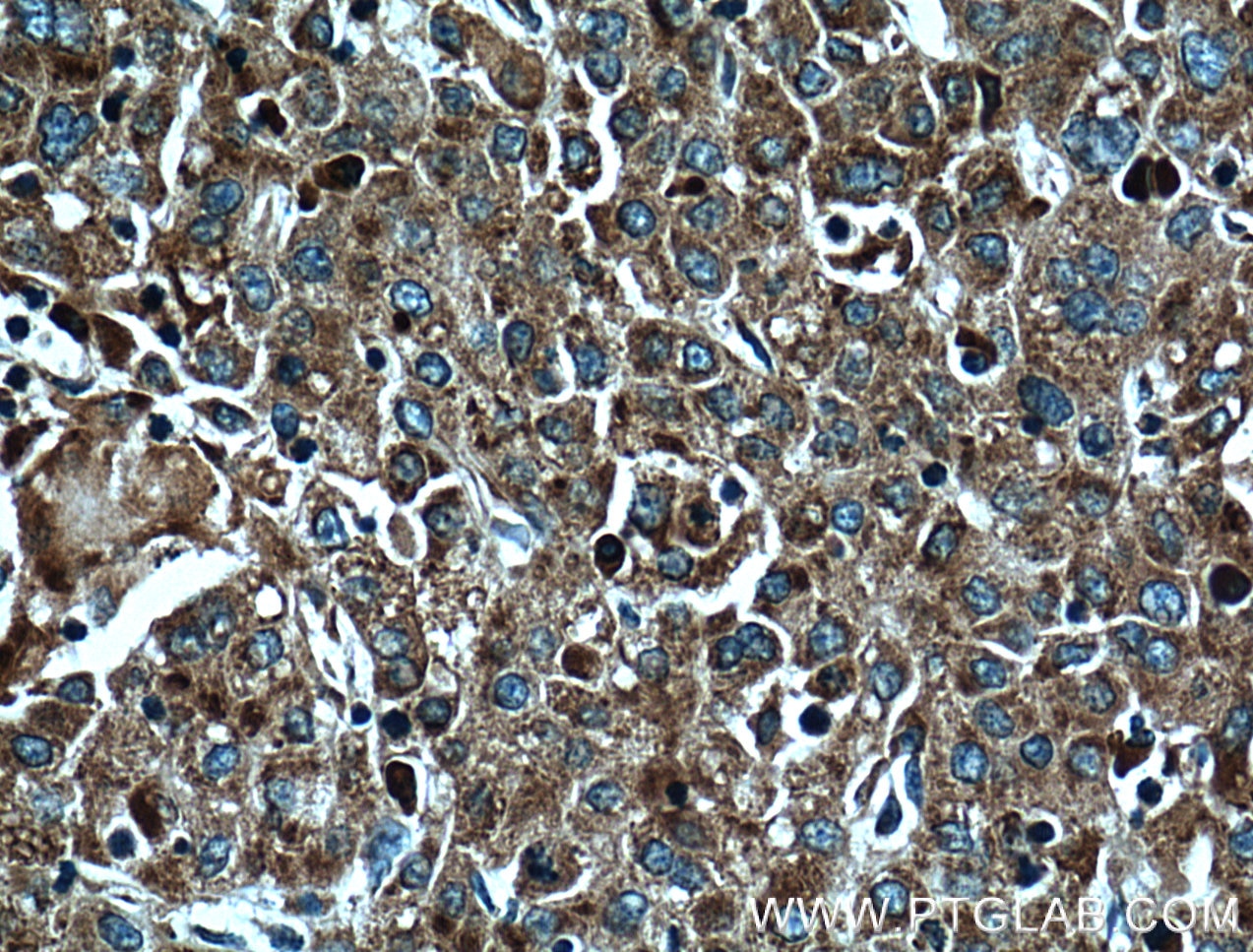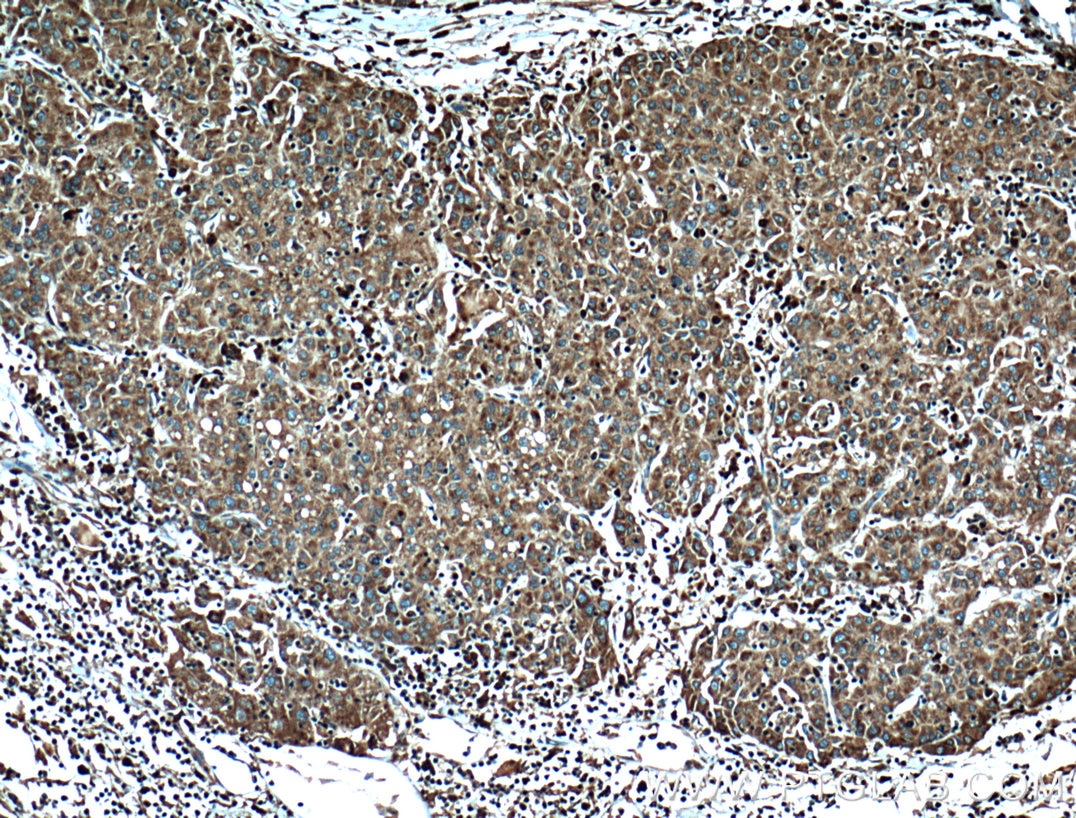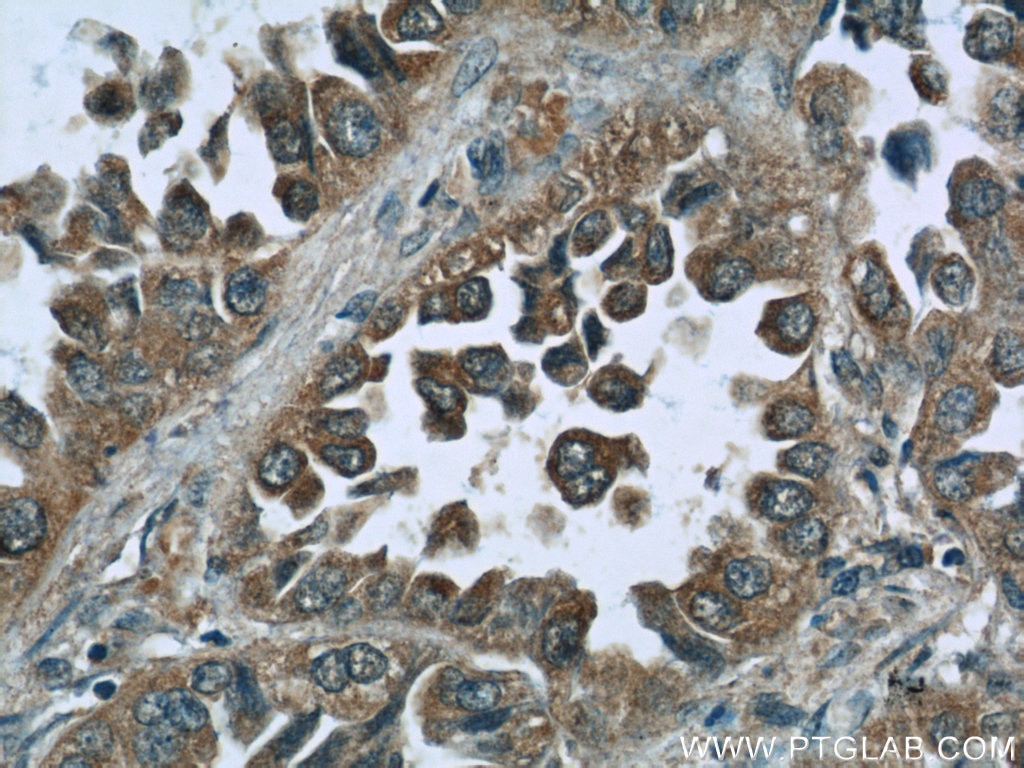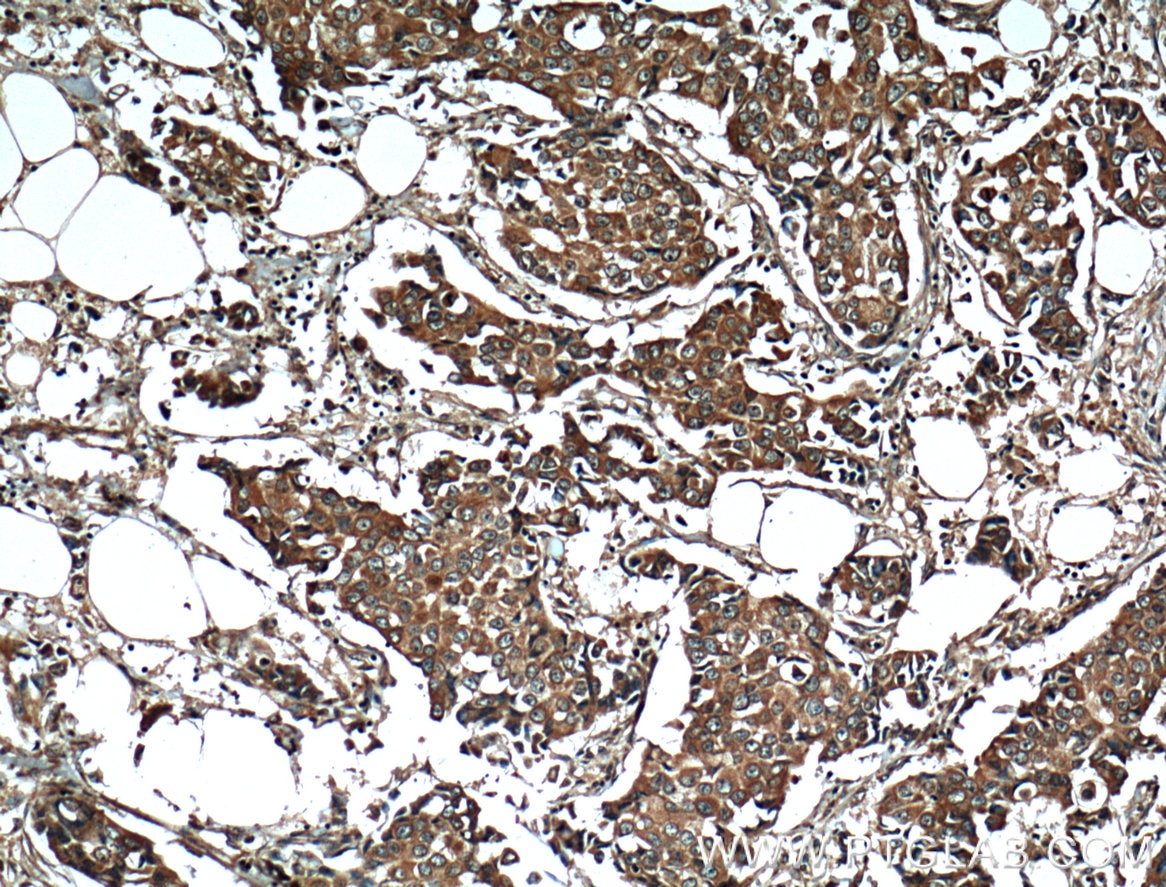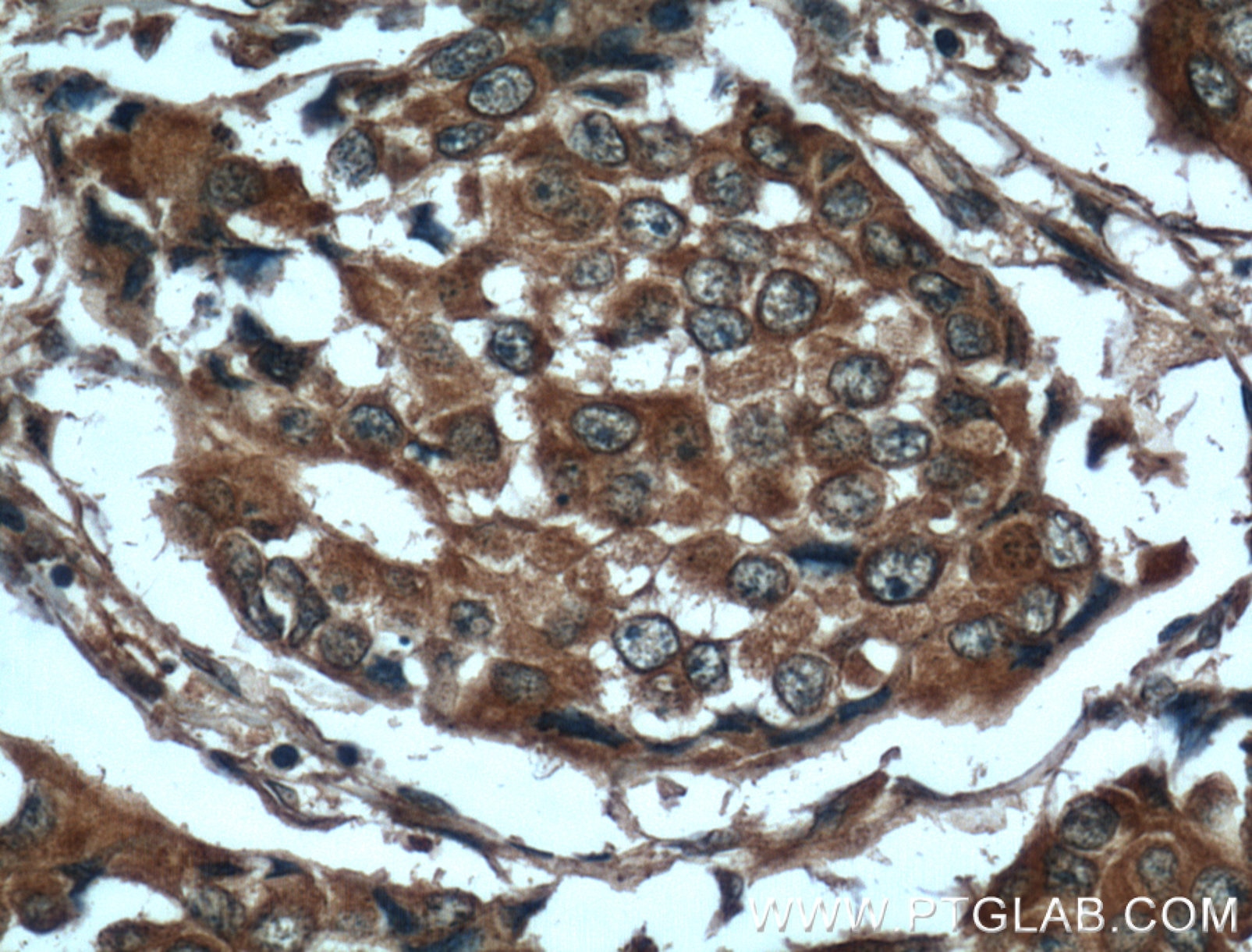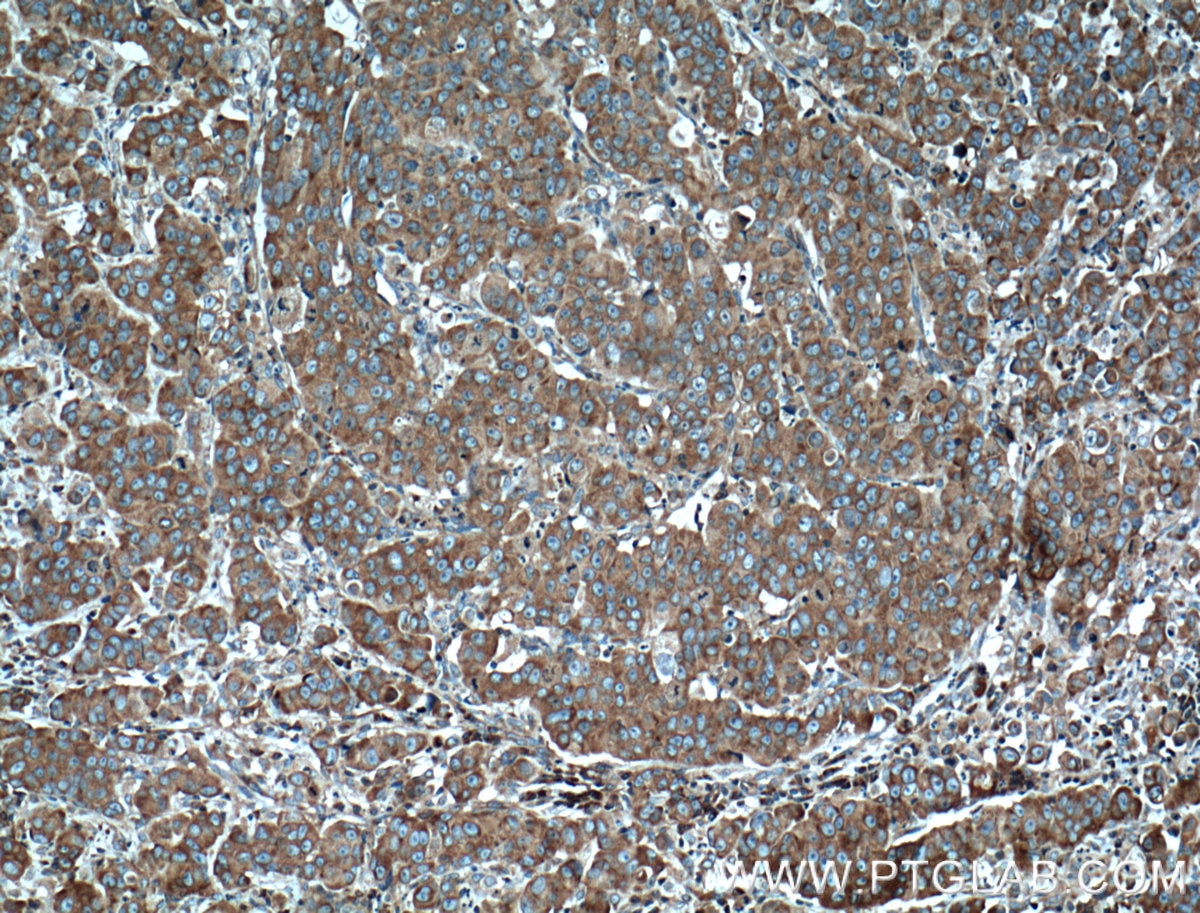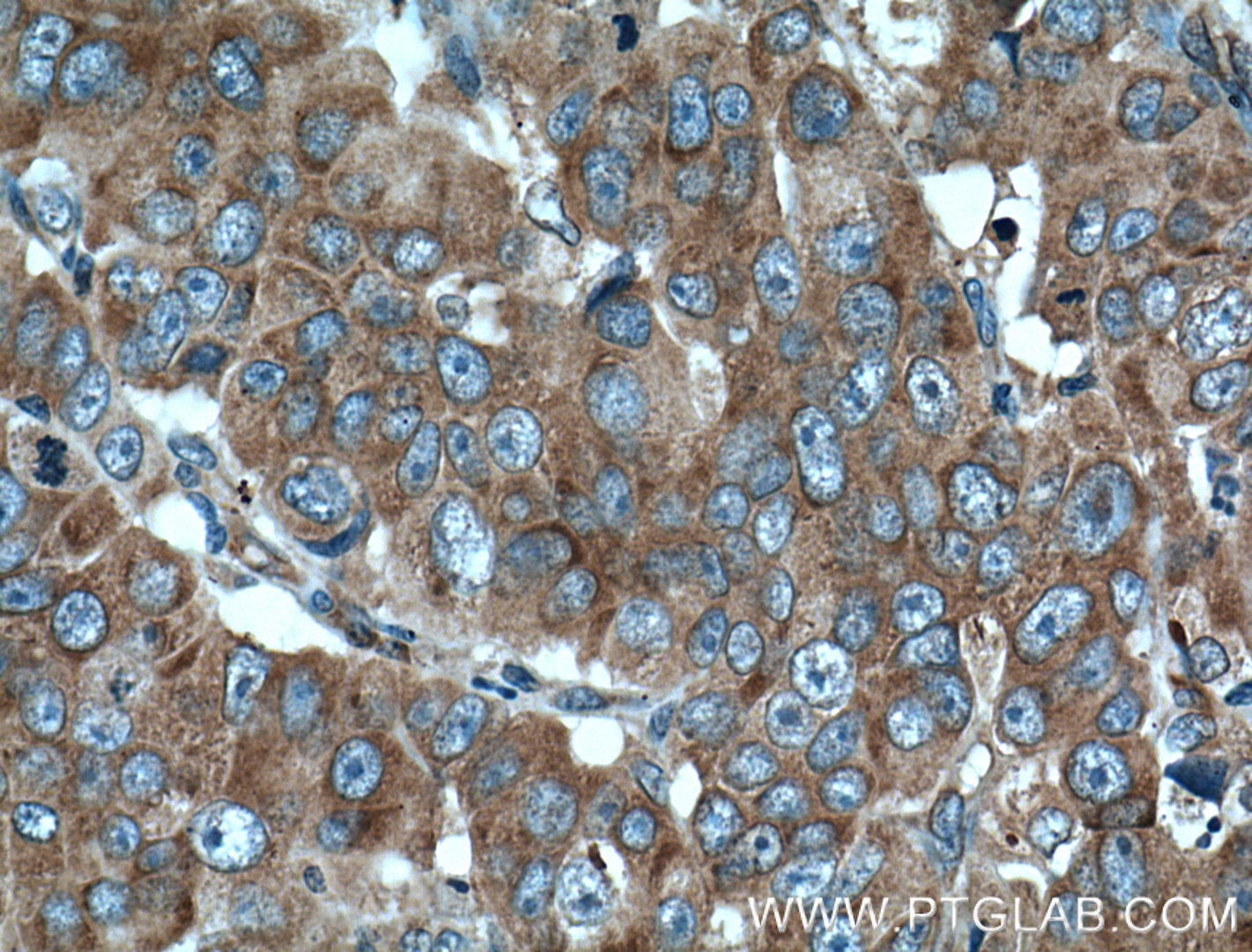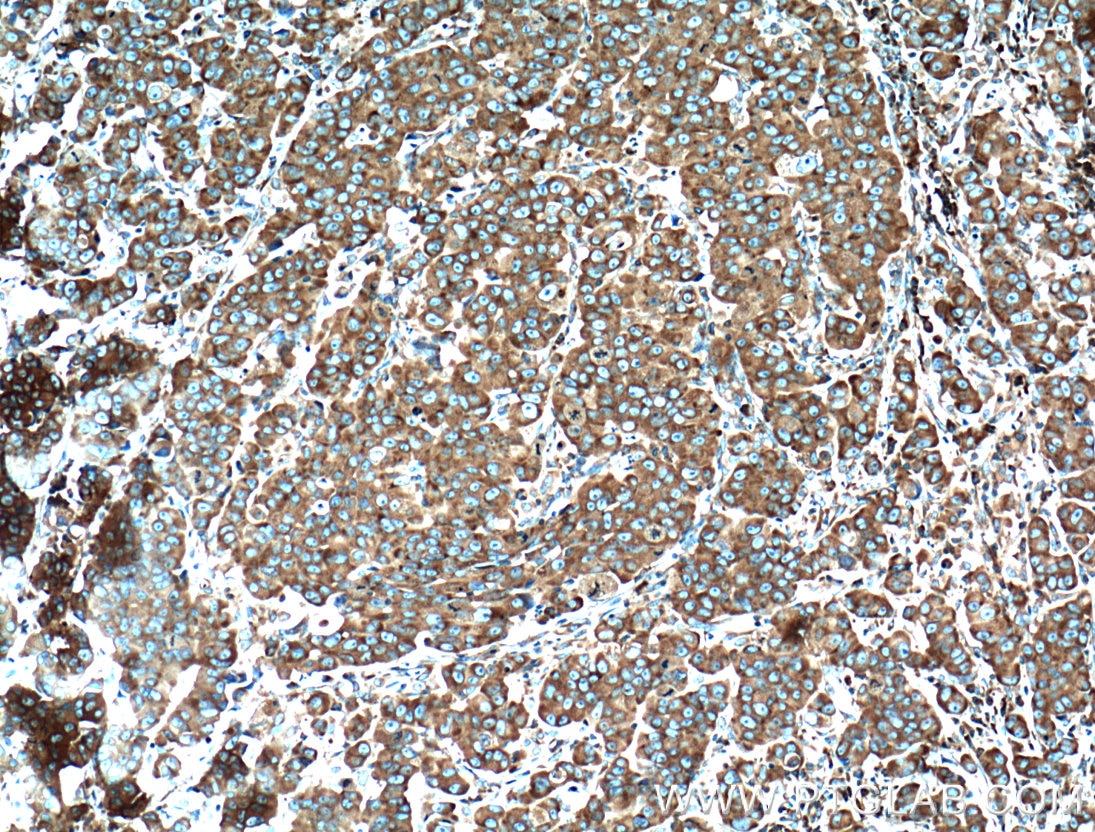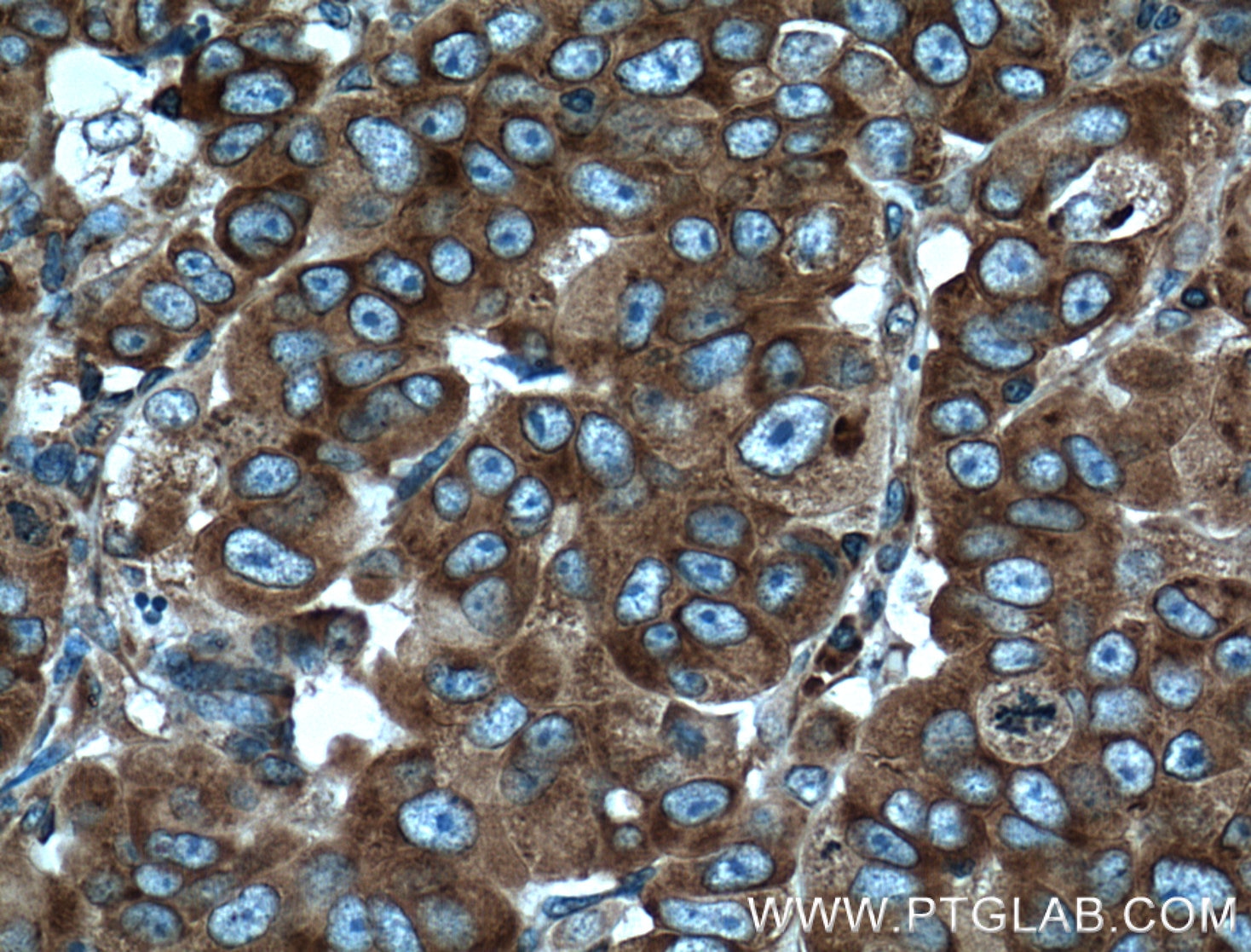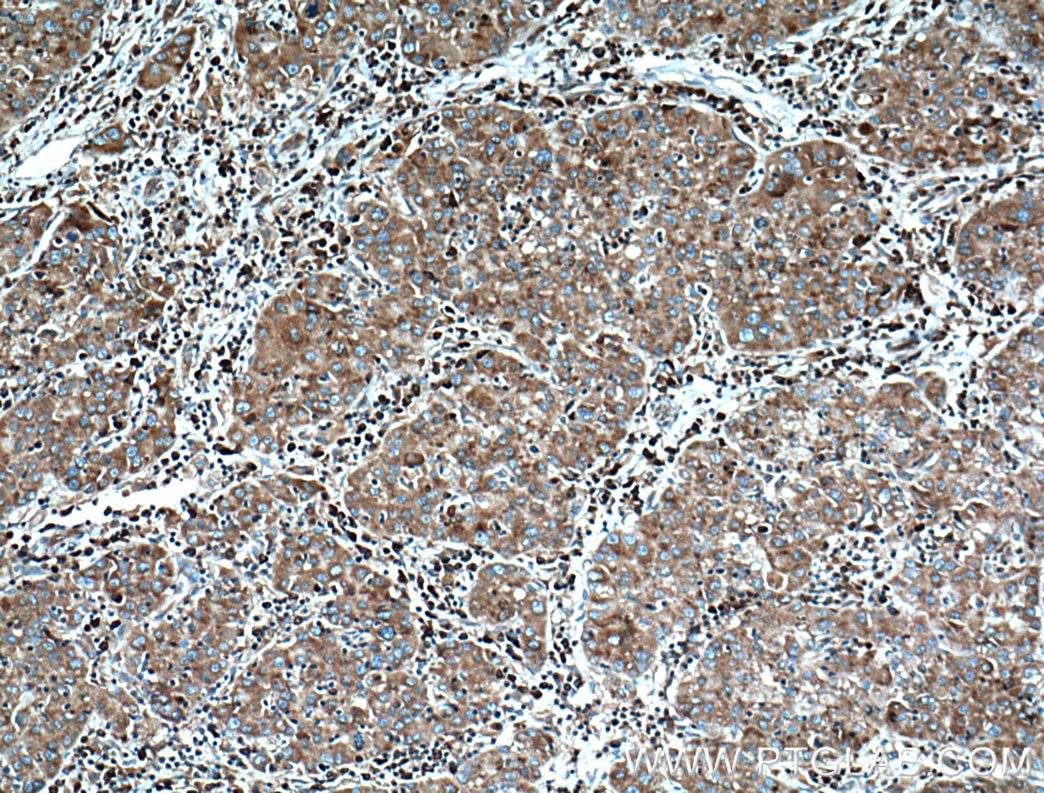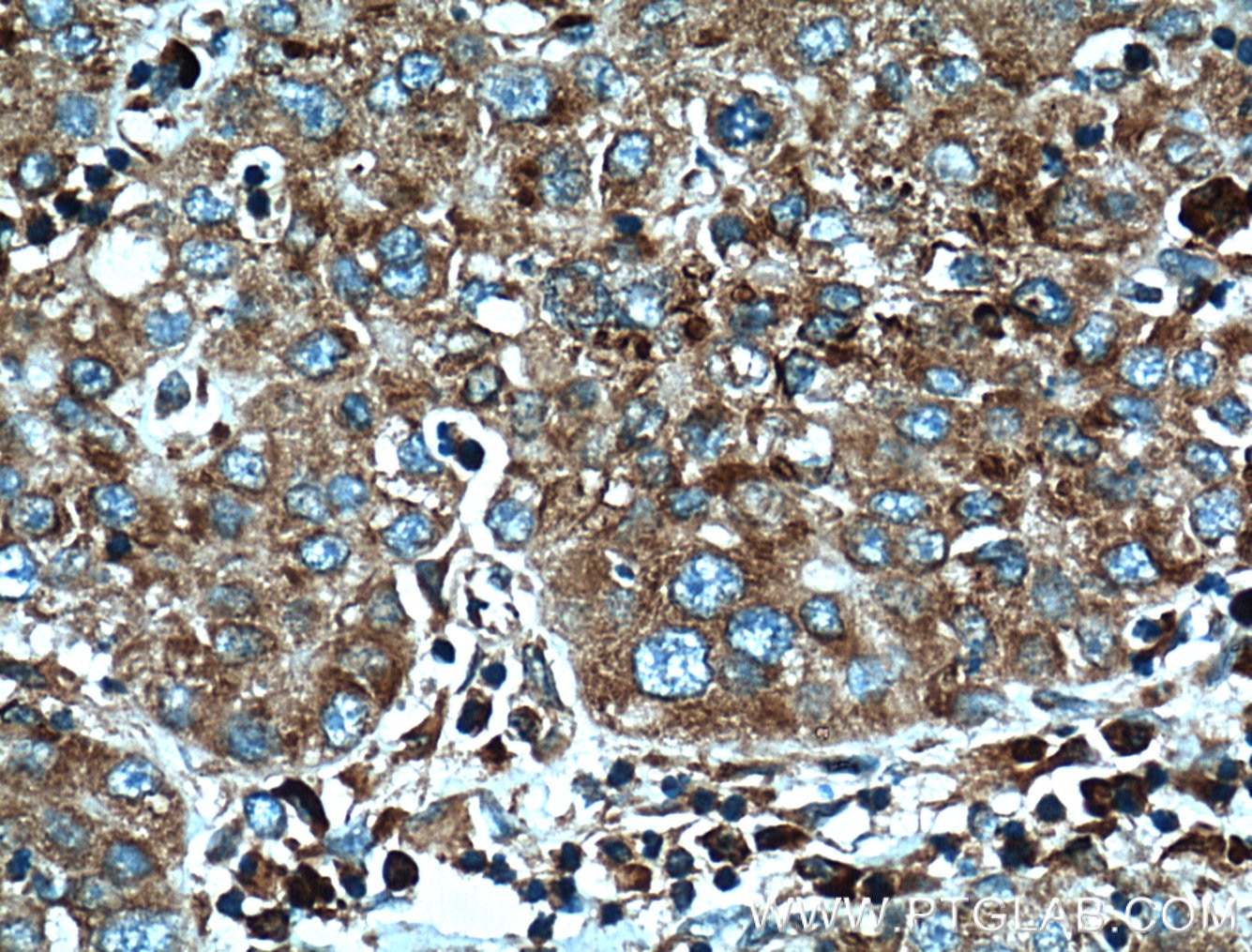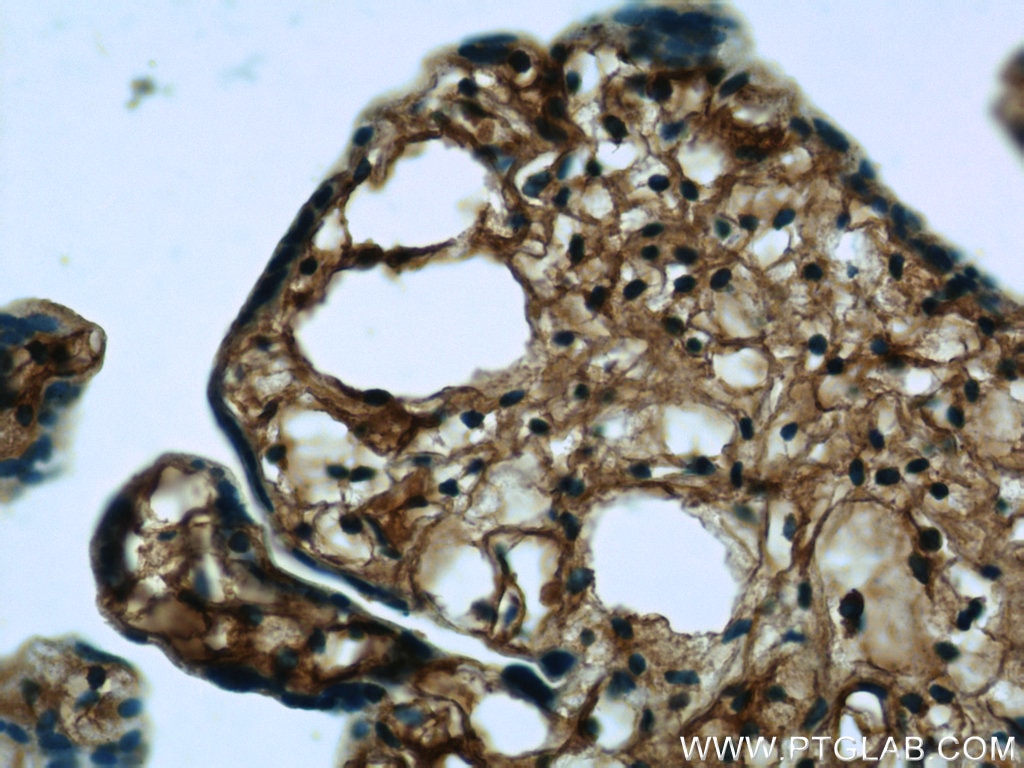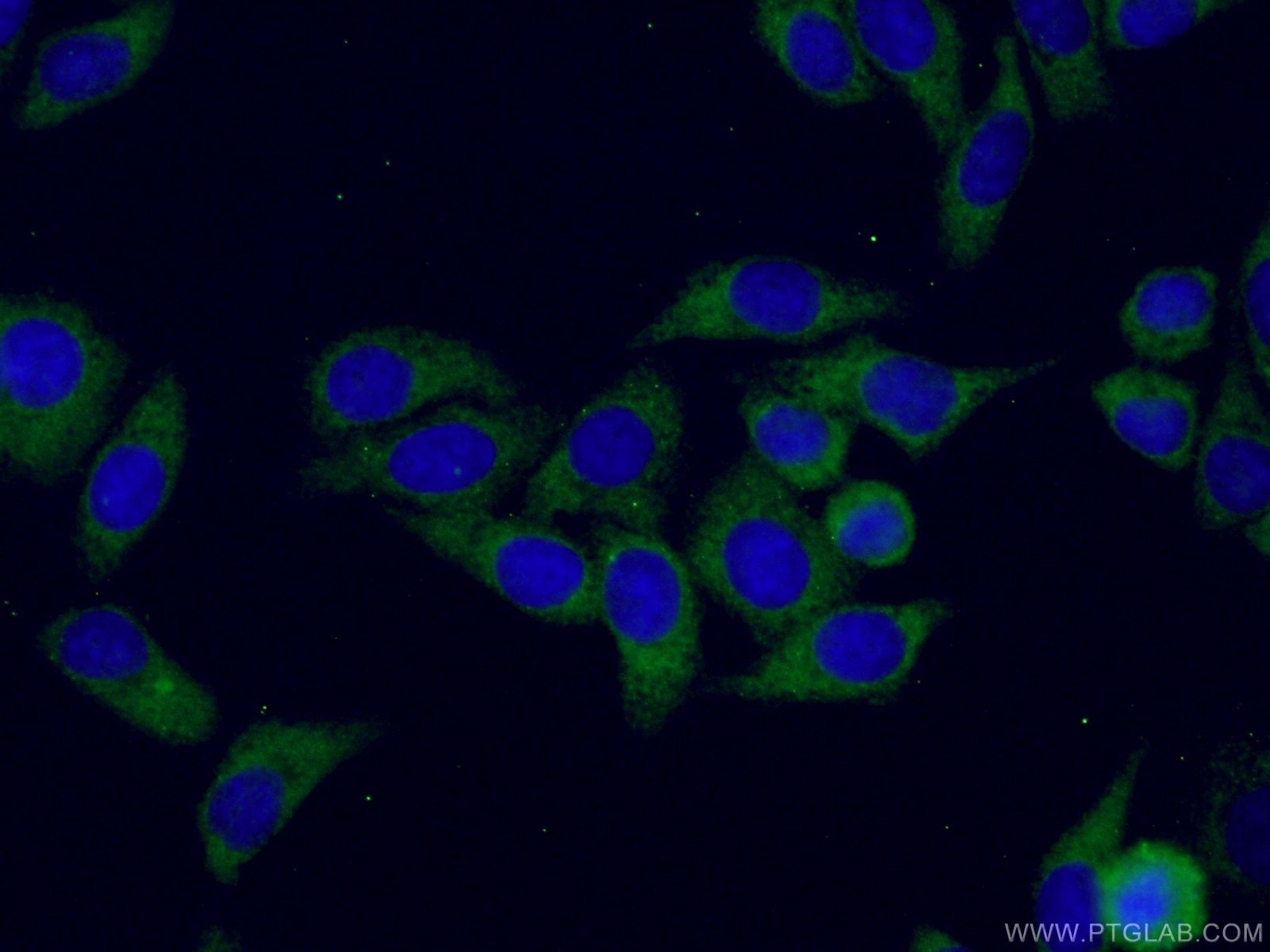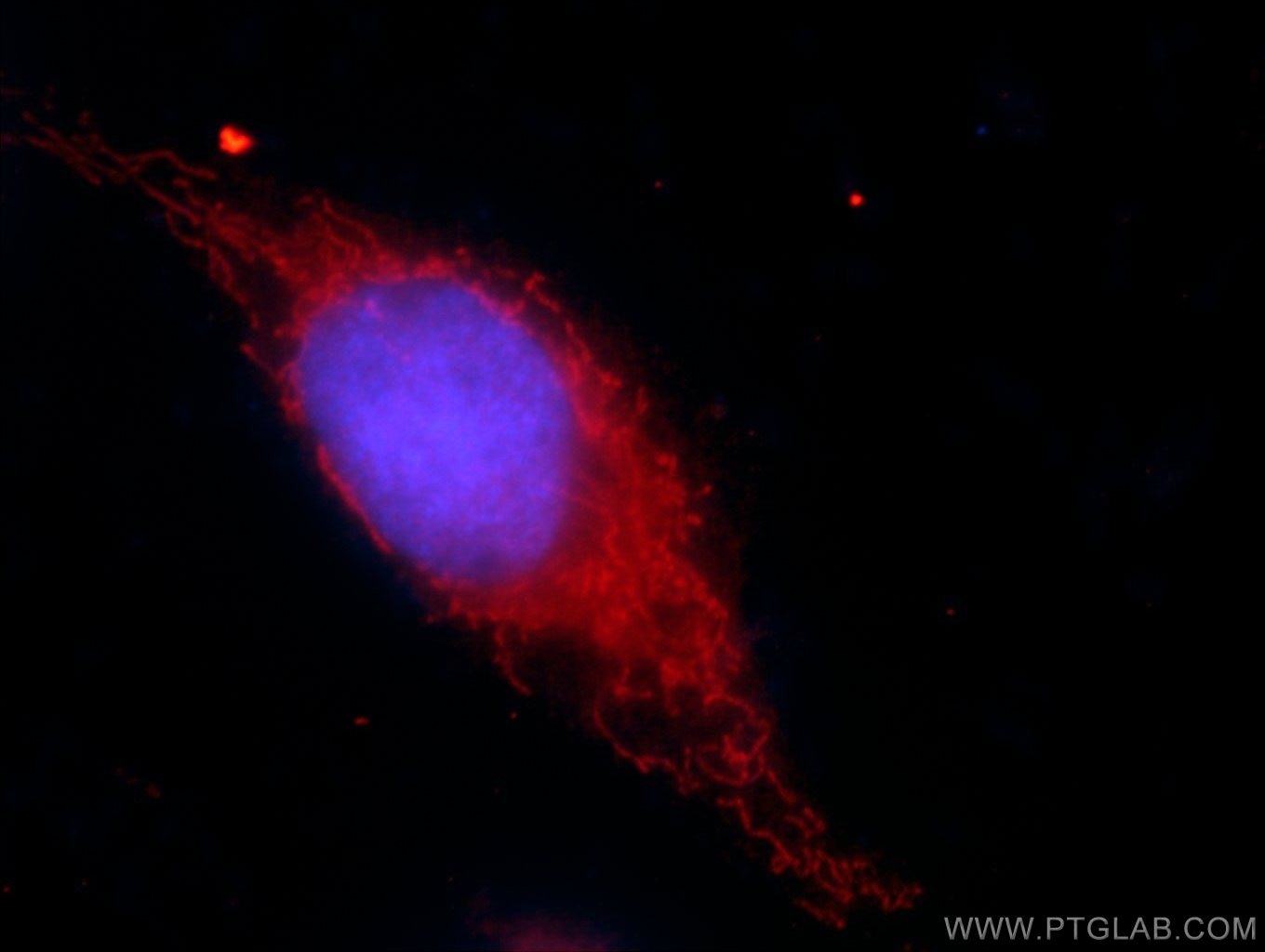Anticorps Monoclonal anti-RPL3
RPL3 Monoclonal Antibody for IF, IHC, WB,ELISA
Hôte / Isotype
Mouse / IgG1
Réactivité testée
Humain, rat, souris
Applications
WB, IHC, IF, ELISA
Conjugaison
Non conjugué
CloneNo.
2G1B8
N° de cat : 66130-1-Ig
Synonymes
Galerie de données de validation
Applications testées
| Résultats positifs en WB | cellules RAW 264.7, cellules HEK-293 |
| Résultats positifs en IHC | tissu de cancer du foie humain, tissu de cancer de la prostate humain, tissu de cancer du poumon humain, tissu de cancer du sein humain, tissu placentaire humain il est suggéré de démasquer l'antigène avec un tampon de TE buffer pH 9.0; (*) À défaut, 'le démasquage de l'antigène peut être 'effectué avec un tampon citrate pH 6,0. |
| Résultats positifs en IF | cellules HepG2, |
Dilution recommandée
| Application | Dilution |
|---|---|
| Western Blot (WB) | WB : 1:1000-1:8000 |
| Immunohistochimie (IHC) | IHC : 1:50-1:500 |
| Immunofluorescence (IF) | IF : 1:50-1:500 |
| It is recommended that this reagent should be titrated in each testing system to obtain optimal results. | |
| Sample-dependent, check data in validation data gallery | |
Applications publiées
| WB | See 2 publications below |
| IF | See 2 publications below |
Informations sur le produit
66130-1-Ig cible RPL3 dans les applications de WB, IHC, IF, ELISA et montre une réactivité avec des échantillons Humain, rat, souris
| Réactivité | Humain, rat, souris |
| Réactivité citée | Humain, souris |
| Hôte / Isotype | Mouse / IgG1 |
| Clonalité | Monoclonal |
| Type | Anticorps |
| Immunogène | RPL3 Protéine recombinante Ag20400 |
| Nom complet | ribosomal protein L3 |
| Masse moléculaire calculée | 46/27 kDa |
| Poids moléculaire observé | 46 kDa |
| Numéro d’acquisition GenBank | BC012786 |
| Symbole du gène | RPL3 |
| Identification du gène (NCBI) | 6122 |
| Conjugaison | Non conjugué |
| Forme | Liquide |
| Méthode de purification | Purification par protéine G |
| Tampon de stockage | PBS avec azoture de sodium à 0,02 % et glycérol à 50 % pH 7,3 |
| Conditions de stockage | Stocker à -20°C. Stable pendant un an après l'expédition. L'aliquotage n'est pas nécessaire pour le stockage à -20oC Les 20ul contiennent 0,1% de BSA. |
Informations générales
Ribosomes, the complexes that catalyze protein synthesis, consist of a small 40S subunit and a large 60S subunit. Together these subunits are composed of 4 RNA species and approximately 80 structurally distinct proteins. RPL3, also named as TARBP-B and MGC104284, belongs to the ribosomal protein L3P family. This protein is a component of the 60S subunit. It can bind to the HIV-1 TAR mRNA, and it has been suggested that the protein contributes to tat-mediated transactivation. As is typical for genes encoding ribosomal proteins, there are multiple processed pseudogenes of this gene dispersed through the genome.
Protocole
| Product Specific Protocols | |
|---|---|
| WB protocol for RPL3 antibody 66130-1-Ig | Download protocol |
| IHC protocol for RPL3 antibody 66130-1-Ig | Download protocol |
| IF protocol for RPL3 antibody 66130-1-Ig | Download protocol |
| Standard Protocols | |
|---|---|
| Click here to view our Standard Protocols |
Publications
| Species | Application | Title |
|---|---|---|
Nat Commun Structural basis of GTPase-mediated mitochondrial ribosome biogenesis and recycling. | ||
Elife METTL18-mediated histidine methylation of RPL3 modulates translation elongation for proteostasis maintenance. | ||
J Biol Chem Disruption of valosin-containing protein activity causes cardiomyopathy and reveals pleiotropic functions in cardiac homeostasis. |
